 NYC-based PIRA Energy Group Reports that U.S. commercial stock set a new record high, but surplus narrowed week-on-week. On the week, Japanese crude runs eased fractionally. Specifically, PIRA’s analysis of the oil market fundamentals has revealed the following:
NYC-based PIRA Energy Group Reports that U.S. commercial stock set a new record high, but surplus narrowed week-on-week. On the week, Japanese crude runs eased fractionally. Specifically, PIRA’s analysis of the oil market fundamentals has revealed the following:
U.S. Commercial Stocks set New Record High, but Surplus Narrows W/W
Total U.S. commercial stocks built to a new weekly record the week ending September 4th. However, with a much larger overall build last year, the year-on-year excess narrowed. The commercial stock surplus should narrow again this week. The DOE weekly crude production number reflected their new lower Short Term Energy Outlook forecast, but another large crude balance item resulted in domestic crude supply of 9.50 MMB/D. Total petroleum demand growth rates remained strong, with declining gasoline growth offset by increased distillate growth.
North America Natural Gas Market Takes on Shade of Optimism
The hot weather initially expected through the first week of September has not only packed a big punch, but extended into a second week bringing with it intense heat normally not associated with the shoulder season. The week-in-progress will have the highest CDD accumulation since records dating back to 1950. Electric generation burns in excess of 32 BCF/D for the Reference Week and the week-in-progress tied to hot weather, together with now complete storage data for August, should quell if not entirely eliminate storage congestion concerns ahead of the heating season.
U.S. Coal Prices Sustain Downward Trend W/W
Coal price again moved lower last week, primarily due to a downshift in oil prices early in the week, as well as a ruling that the Colombian rail constrain is effectively over. Despite this freeing up of Atlantic Basin supply, API#2 (Northwest Europe) held up by the largest extent in the prompt, compared to greater declines for API#4 (South Africa) and FOB Newcastle (Australia). Coal market fundamentals remain unconstructive to price gains, with slack demand and insufficient supply tightening. PIRA continues to assert that the coal market will move in concert with oil pricing over the short term, limiting the upside for coal over the next 90 days.
U.S. Ethanol Prices and Manufacturing Margins Higher
After being stable for over a month, U.S. ethanol prices were higher the week ending September 4. Manufacturing economics also improved, boosted by lower corn costs.
WASDE Review
So, what now? We heard a lot of comments this weekend from grain merchandisers that producers should “reward” this post-WASDE rally with additional sales, both in 2015 and 2016. The reason for this is both technical and the general negativity that continues to surround commodities.
Mixed Climate/Energy Legislation in California
A bill to set Greenhouse Gas reduction targets for California beyond 2020 did not pass, largely due to intra-governmental turf battles. The short-term impacts of the bill’s failure are muted; long term targets have been in place via executive orders (unlikely to be altered soon). Carbon markets remained largely unfazed and regulatory efforts to achieve reductions post 2020 are ongoing. A pared-down SB350 did pass, enshrining ambitious 2030 renewables and energy efficiency targets. Failure to cement long-term emissions goals adds to policy uncertainty.
Japanese Crude Runs Ease Fractionally W/W
Japanese crude runs eased fractionally the week ending September 5th, while crude imports surged and crude stocks more than recaptured the large stock draw in the prior week. Finished product stocks drew modestly. Gasoline demand was slightly lower, while higher yield was largely offset by a rise in exports, and stocks drew a bit. Gasoil demand was higher, but so was yield, and stocks built slightly.
U.S. Ethanol Production Rises for the First Time in Four Weeks
U.S. Ethanol output increased to 958 MB/D from 948 MB/D as more plants completed their summer turnarounds. Ethanol inventories were drawn by 360 thousand barrels to 18.6 million barrels, which was 621 thousand higher year-on-year.
U.S. LPG Prices Strengthen with Seasonal Demand
Strength in U.S. LPG prices is persistent. As the off-season inventory building season comes to an end with doomsday scenarios of soaring inventories never materializing, prices are recovering ground lost due to these fears. Propane and butane at Mt Belvieu outperformed broader energy markets by logging gains of 2% to 44.8¢ and 57.6¢/gal, respectively. Ethane gained 1% in line with natural gas prices to maintain a 13¢/MMBtu premium above Henry Hub prices.
Russian Natural Gas Prices at Excellent Value
It has been a good time for Russian gas marketers and policymakers to test the waters on both short- and long-term structural changes to how gas is marketed. Russian gas prices are an excellent value right now relative to competitors and it is an enticing "buy low" moment for its customers. And when we use the term "buy" in the European gas market context, the definition ranges from the buying of more gas now to the buying of the idea that auction sales and Nord Stream II are positive concepts for the future.
Financial Volatility Lessens W/W
Financial volatility as measured by the VIX index lessened the week ending September 11th, but stresses are still seen as elevated. With regard to currencies, there continues to be local currency weakness in the Asian export economies, the commodity producers, along with other currencies such as the Turkish lira and South African rand. Commodities remain generally in decline, though there was again strength in palladium, aluminum and copper. The non-energy commodity index was higher on the week.
Summer’s Last Gasp for Counter-Seasonal Market Balancers?
The vital role in balancing the market played by counter-seasonal Mideast and South American markets, as well as newcomers Egypt, Jordan and Pakistan, cannot be understated in a world that should have seen a large-scale supply surge with the addition of three new production trains in Asia. All this without a corresponding uptick in demand for contracted buyers of those new volumes.
Global Equities Mostly Positive W/W
Global equities posted mostly gains the week ending September 11th. In the U.S., the strongest performers were housing and technology, while the laggards were energy and retail. Internationally, gains were also posted, with China, emerging markets, and emerging Asia being the best performers, while Latin America was down slightly.
U.S. NGL Production Slightly Higher in June
U.S. NGL production inched higher in June compared to prior month. Strong NGL production implies that field producers are still focused on wet gas production. The small observed increase in total NGL production would have been significantly greater with deep cut ethane and propane recovery. As robust as the latest data are, year-on-year NGL production growth declined.
Vladivostok Fertilizer Producer Signs Gas Supply Agreement with Gazprom
Gazprom Mezhregiongaz and NChG have signed a 20-year contract for the supply of natural gas to the Nakhodka Mineral Fertilizers Plant at the Eastern Economic Forum in Vladivostok. Gas supplies will begin in 2019 and, from 2021, will amount to 3.15-bcm/y.
U.K. Spark Spreads Remain Compressed
U.K. spark spreads remain very compressed along the curve, with demand destruction and growing renewable generation hitting load factors for CCGTs and, generally, thermal assets. Numbers are looking slightly more constructive now than a few months ago, but fundamentals are still not strong enough to allow for a price recovery.
RGGI Auction Exhausts Reserve
The September Regional Greenhouse Gas Initiatives (RGGI) carbon auction cleared at $6.02, exhausting the entire Cost Containment Reserve. Players without compliance needs were active bidders again. PIRA believes the additional supply should soften post-auction secondary market demand, limiting further significant upside for allowance prices. A willingness to continue to build allowance inventories suggests expectations that policy developments will provide value for RGGI allowances beyond what is implied by the current program.
Fuel Price Subsidies: Subsidy Removal in Oil Exporting Nations to Remain Gradual
Over the past 12 months, weak oil prices drove several governments to reform fuel subsidy policies. The countries that moved first were those taking advantage of depressed oil prices to provide political cover to remove subsidies. Many of these countries faced a growing fiscal burden from rising oil imports, and the move away from fixed (and previously subsidized) prices often coincided with retail price cuts. Then, earlier this year large oil exporting countries also joined in on the moves. But in many cases fuel prices increased. Further subsidy removal from this group has the potential to dampen future oil demand. The group accounts for nearly 30% of global oil demand growth through 2020. Yet PIRA believes political pressure and internal dynamics will prevent a widespread move towards market pricing, at least for now.
WASDE Needs Answers
Fun with numbers. Report day came Friday with corn, soybeans, and wheat all trading at or near prices that end in .75. Corn was trading $3.75, wheat was $1.00 more expensive, while soybeans had a $5.00 premium to corn. Significant?
Power Sector CO2 Emissions Ease; Auction Supply Ramps Up
Overall demand for EU carbon at auctions remains weak—even as weather-driven (hot/dry) power sector fundamentals (except for Scandinavia and the U.K.) have been bullish. PIRA expects a slight EU Allowance price correction with the easing of weather-driven demand and the return of regular, higher auction volumes. Looking ahead, the level of back-loading drops (and auction supply increases) as of Jan 1. While upcoming Paris climate talks can buoy general sentiment, exactly how an agreement can support EU Emissions Trading System prices is less clear.
Gas Producers Quarterly Earnings Call 2Q15
PIRA’s Gas Producers Quarterly Earnings Call highlights and summarizes the operational achievements of the top publicly traded U.S producers and delineates current activity by resource play from the 2Q15 earnings season.
The information above is part of PIRA Energy Group's weekly Energy Market Recap - which alerts readers to PIRA’s current analysis of energy markets around the world as well as the key economic and political factors driving those markets.


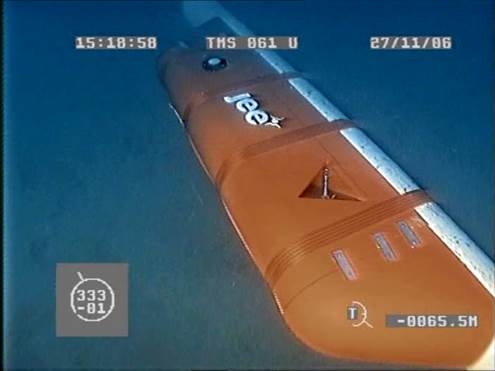 Jee span monitoring kit
Jee span monitoring kit As the year approaches the fourth quarter, many industry observers are dusting off their forecasts for 2016 and re-thinking. Last week, HSBC lowered its oil price outlook to $60/bbl for 2016. The EIA, in its latest Short Term Energy Outlook also revised its 2016 projection downward by $8/bbl to $59/bbl. As the oilfield community starts to reflect on 2015, the number one question will surely be: “where is the recovery?”
As the year approaches the fourth quarter, many industry observers are dusting off their forecasts for 2016 and re-thinking. Last week, HSBC lowered its oil price outlook to $60/bbl for 2016. The EIA, in its latest Short Term Energy Outlook also revised its 2016 projection downward by $8/bbl to $59/bbl. As the oilfield community starts to reflect on 2015, the number one question will surely be: “where is the recovery?” Ahead of Tuesday’s congressional hearing in New Orleans, API highlighted the importance of offshore oil and natural gas development to the region's economic development.
Ahead of Tuesday’s congressional hearing in New Orleans, API highlighted the importance of offshore oil and natural gas development to the region's economic development.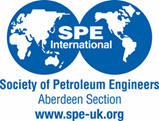 The
The 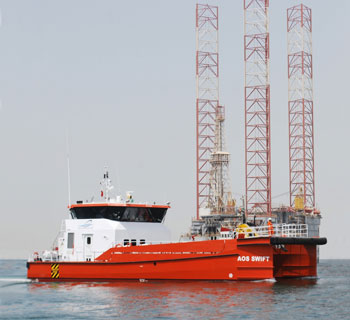 Damen Shipyards Group
Damen Shipyards Group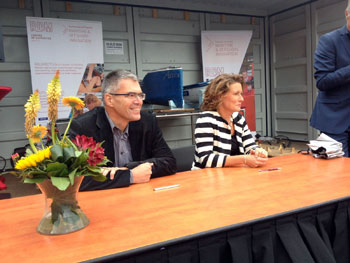 Imtech Marine signed during the World Port Days 2015 in Rotterdam for a prolonged stay at the RDM Innovation Dock. From left to right Mark Linde (Global Director Design Technology & Engineering) on behalf of Imtech Marine and Angelien Sanderman (Member of the Board) on behalf of Rotterdam University of Applied Sciences.
Imtech Marine signed during the World Port Days 2015 in Rotterdam for a prolonged stay at the RDM Innovation Dock. From left to right Mark Linde (Global Director Design Technology & Engineering) on behalf of Imtech Marine and Angelien Sanderman (Member of the Board) on behalf of Rotterdam University of Applied Sciences.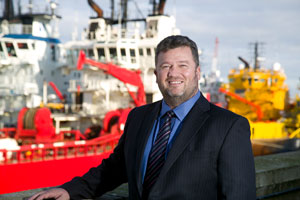 Roddy James, N-Sea chief operating officer
Roddy James, N-Sea chief operating officer 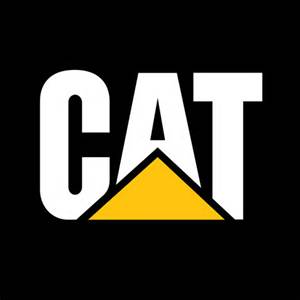 Caterpillar Oil & Gas
Caterpillar Oil & Gas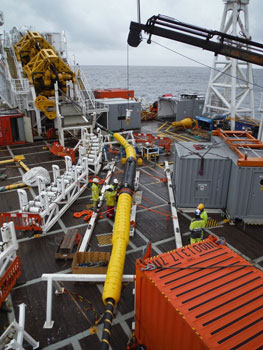 In addition, Tekmar has successfully supplied and installed equipment on the prestigious Martin Linge project. Their involvement on the landmark Norwegian development included supply of bend restrictors on the world’s longest high voltage subsea power cable at 170 km (105 miles).
In addition, Tekmar has successfully supplied and installed equipment on the prestigious Martin Linge project. Their involvement on the landmark Norwegian development included supply of bend restrictors on the world’s longest high voltage subsea power cable at 170 km (105 miles). NYC-based
NYC-based 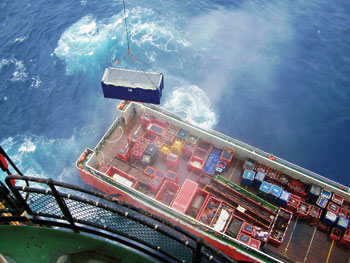 Sparrows Group will provide operations and maintenance support for cranes and lifting equipment to ADMA-OPCO
Sparrows Group will provide operations and maintenance support for cranes and lifting equipment to ADMA-OPCO 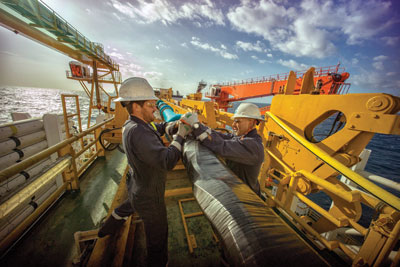 The scope of the contract includes the supply of a complete workover riser system including surface test tree and subsea landing string systems. Operations, maintenance and engineering support services will also be provided for the system including global riser analysis and life cycle fatigue monitoring.
The scope of the contract includes the supply of a complete workover riser system including surface test tree and subsea landing string systems. Operations, maintenance and engineering support services will also be provided for the system including global riser analysis and life cycle fatigue monitoring. Andrew Wylie, Scotland Subsea Operations Manager
Andrew Wylie, Scotland Subsea Operations Manager